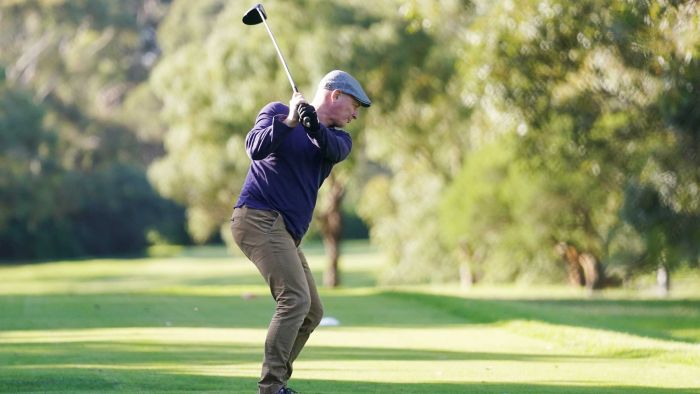Australia’s most accomplished male golfer, the five-times British Open champion Peter Thomson, learnt to play at the modest Royal Park public course on the leafy northern fringes of Melbourne’s city precinct.
The 1981 US Open champion David Graham’s first shots were fired at Wattle Park in Melbourne’s east, a course so easily accessible that rubber mats were used on the tees because the grass would have been destroyed by the incessant use.
Famously, 2015 US PGA Championship winner Jason Day’s first club was a three wood retrieved by his father Alvin from the local tip near his Beaudesert home.
The enduring narrative of Australian golf is its relative egalitarianism. The game has thrived here as a mass-participant sport because it is not found only behind country club walls as in some parts of the United States, nor is it defined by purely demographics, as is still the case in Europe.
Yes, Australia has many wealthy private clubs where both the entry process and cost of membership perpetuate the game’s privileged white male stereotype.
But the beauty of Australian golf has always been that if you wanted a hit you could find somewhere to wack a ball: from the public courses not far from the CBD to the many rural clubs that vary in quality from hidden gem to parched sand-green abomination.
Now golf is facing a looming battle to protect inner-city public courses from covetous developers and supposedly “progressive” local governments that view golf as sympathetically as they might strip clubs and abattoirs.
Sydney Lord Mayor Clover Moore has suggested that Moore Park Golf Club, situated on prime land not far from the SCG, should be reduced from 18 holes to nine and is reportedly spending $50,000 on a public consultation plan.
If you will pardon the pun, this is wedge politics.
Loading
It will be easy for Cr Moore to find residents who believe the golf course should be given over to the local community, regardless of the fact that as a public course it is already accessible to many.
Golf is effortlessly portrayed as an elitist game, partly due to its own failure to become more inclusive, and also as a “dwindling pastime” because of a recent decline in participation.
Golf Australia reports that overall participation in the sport has fallen from 1.029 million in 2016 to 878,000 in 2019, while club membership has slumped from almost 500,000 in 1998 to 383,794 (despite a slight increase last year).
The factor most often blamed for this trend is a “time poor” society. For every golfer who plays the once traditional five-hour Saturday afternoon round followed by three hours in the clubhouse lying about their performance, there are a half a dozen divorce lawyers rubbing their hands together in anticipation.
The current figures also represent a natural decline, from the “Greg Norman” boom of the 1990s when most private clubs had long waiting lists and there was enormous competition for tee times at even the most modest public courses, to more sustainable numbers.
Cr Moore might use these figures to suggest golf courses are now an indulgence. Yet the citadels under attack, inner-city public courses, are still generally well-utilised and also enduring monuments to the game’s relative social equality.
Golf’s version of a culture war
During Melbourne’s COVID-19 lockdown, when golf was banned, some public golf courses were used by dog walkers and others getting their mandated one hour of exercise.
Inevitably what was a short-term loan of public space has led to entitlement. Walkers who cut a hole in the fence to access Northcote Public Golf Course in Melbourne’s inner-north are now claiming permanent land rights.
Of course a skinny five-iron from the club of a local hack does not mix particularly well with the unprotected skull of a dog walker, which is why the fence was erected in the first place.
So a culture war of sorts has eventuated. One in which the non-golfing residents of a Greens-leaning suburb can use the stereotypical image of privileged golfers to mischievously cast the game as an elitist, land-grabbing sport when those using the local course are actually golf’s equivalent of working-class battlers.
Similarly, because the game requires acres of green space a golf course can be derided as being for the exclusive benefit of a few when, in Australia, public courses reverse the privilege that lies inside the expensively manicured grounds of private clubs.
As with the replacement of so many inner-urban tennis courts with apartment buildings, the question is how the reduction or removal of public golf courses would impact the opportunity of social players and, by extension, the potential pool of future stars.
Will as many kids hit their first golf ball at a public course as Thomson, Graham and many other budding professionals did? Will they play the game at all?
Whatever the answer, reducing or removing public golf courses would not be a victory for the great proletariat. It would just make what has been a “people’s game” far less accessible.







